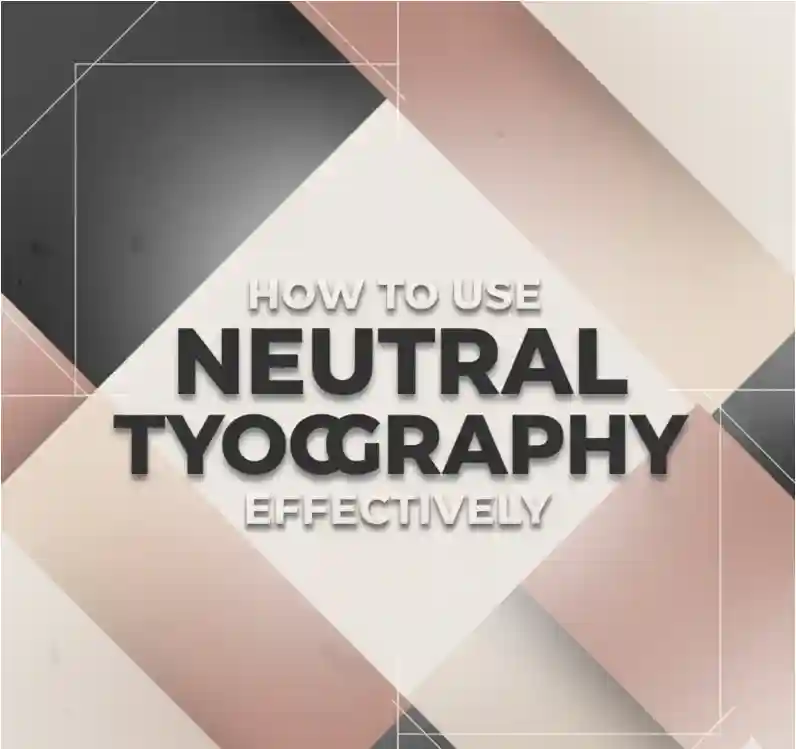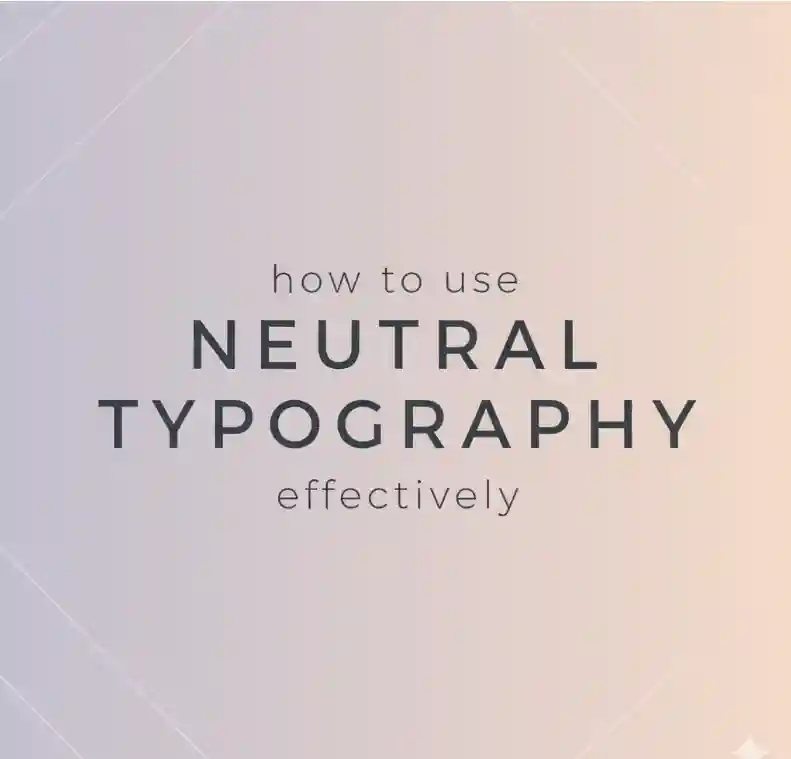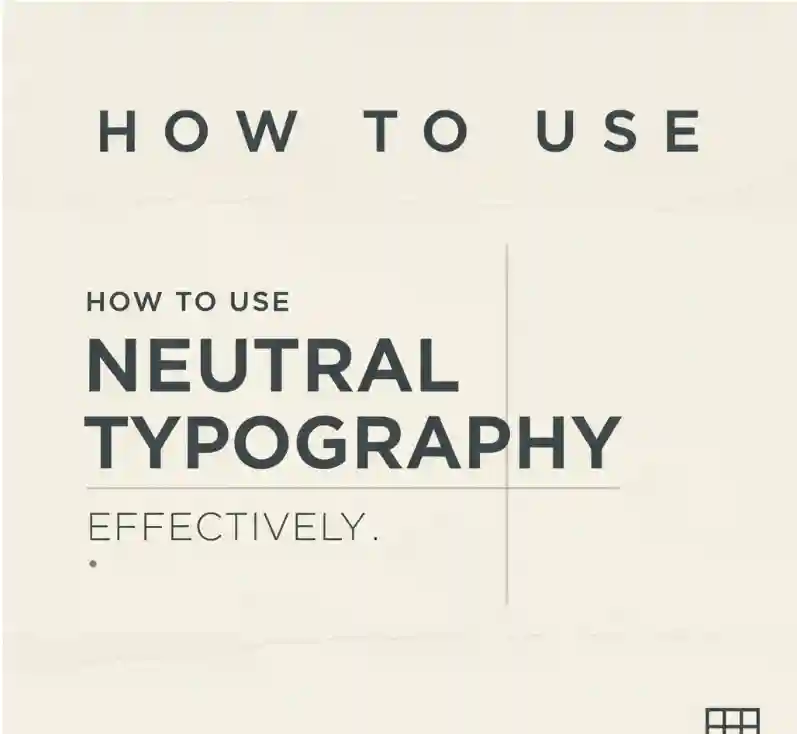Table of Contents
- What Is Neutral Typography?
- Why Neutral Fonts Matter in Design
- Characteristics of Neutral Typography
- When to Use Neutral Fonts
- How to Combine Neutral Typography with Expressive Fonts
- Common Mistakes to Avoid
- Best Practices for Using Neutral Typography
- Recommended Neutral Fonts from RaisProject
- Final Thoughts

1. What Is Neutral Typography?
Neutral typography refers to typefaces designed without strong emotional or stylistic associations. These fonts don’t draw too much attention to themselves — instead, they allow your content to shine.
Think of clean sans-serif or minimal serif typefaces that feel modern, stable, and versatile. Neutral typography is the foundation of countless brand identities, from tech companies to editorial design, because it communicates clarity and professionalism.
2. Why Neutral Fonts Matter in Design
Neutral fonts play a crucial role in maintaining visual balance. They serve as the “silent partners” in your layout — reliable, readable, and timeless.
Designers choose neutral typography when they want:
- Legibility and clarity to take center stage
- Content-driven layouts (e.g., websites, books, portfolios)
- Versatility across different branding materials
- A professional and modern aesthetic
In short, neutral fonts allow other design elements — colour, imagery and spacing — to speak louder.
As noted in a design tips article from RaisProject: “Sans-Serif Typography: Neutral, legible fonts that communicate clearly.” Rais Project Studio by Handmade Fonts

3. Characteristics of Neutral Typography
To identify a neutral typeface, look for:
- Minimal stylistic flair – few decorative or emotional cues
- Balanced proportions – consistent weight and spacing
- Clean geometry – simple shapes that support readability
- Timeless structure – unaffected by fleeting trends
Neutral typography doesn’t mean boring. It’s about restraint, balance, and purpose.
4. When to Use Neutral Fonts
Neutral fonts are ideal for:
- Corporate branding – logos, stationery, presentations
- Editorial design – magazines, books, newspapers
- Web design – UX/UI, landing pages, apps
- Minimalist projects – portfolios, architecture, photography
For example, a product-focused website may use a neutral sans-serif for body text and navigation, ensuring the visuals and products remain the main focus.
5. How to Combine Neutral Typography with Expressive Fonts
Pairing is where neutral fonts truly shine. Use them as the foundation and layer expressive fonts for contrast.
Example pairing ideas:
- Neutral sans-serif + elegant serif for luxury brands
- Neutral serif + playful script for lifestyle blogs
- Neutral sans-serif + display font for startups or creative agencies
On RaisProject, for instance, you might pair a neutral sans-serif from the Sans/Serif category (e.g., “Aday Sans Serif Font” from the Sans/Serif collection ) with a decorative script for your headline.
This approach is also recommended in the site’s article on readability: pairing a decorative font for headings with a “neutral sans-serif for body text”. Rais Project Studio by Handmade Fonts
6. Common Mistakes to Avoid
Even neutral fonts can go wrong when misused. Avoid:
- Overusing too many neutral fonts – it can feel bland
- Ignoring hierarchy – all-neutral doesn’t mean flat
- Neglecting context – some neutral fonts work better in print than digital
- Not testing readability – adjust kerning, tracking, and line height
Remember: subtlety doesn’t mean invisibility.
7. Best Practices for Using Neutral Typography
To use neutral typography effectively:
- Define hierarchy clearly – use weight and size variations.
- Test across devices – readability matters everywhere.
- Use whitespace generously – it enhances clarity.
- Limit your font palette – 2–3 typefaces max.
- Let content breathe – neutral fonts thrive in minimal layouts.
If your design includes lots of images or colour, a neutral font keeps balance and sophistication intact.

8. Recommended Neutral Fonts from RaisProject
Here are some neutral yet highly functional fonts from RaisProject that fit various creative needs:
Using any of these as your neutral foundation, you can then layer expressive or display fonts to create contrast, hierarchy, and personality.
9. Final Thoughts
Neutral typography may not steal the spotlight, but it defines the stage. It ensures your message is delivered with confidence and clarity.
When used strategically — with the right spacing, pairing, and tone — neutral fonts help you create a timeless, professional, and cohesive visual identity.
Explore RaisProject’s full font library to find the perfect balance between neutrality and character. Whether you’re designing for print, digital, or branding, the right neutral typeface will always elevate your work.
